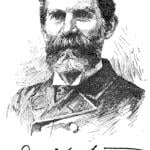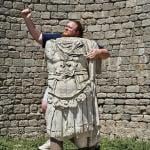 I’ve been teaching a DMin cohort this week at Northern and I couldn’t have done these meanderings without Kris sending most of them my way … so again, thanks to Kris for your morning’s reading.
I’ve been teaching a DMin cohort this week at Northern and I couldn’t have done these meanderings without Kris sending most of them my way … so again, thanks to Kris for your morning’s reading.
Cyberbullying, a young woman has become proactive:
“You are so ugly!”
“Go get a life, loser!”
Fourteen-year-old Trisha Prabhu of Naperville is on a mission to rid the world of such online messages.
“I knew I had to do something to stop this problem,” she said of cyberbullying, which affects roughly 50 percent of teens, according to studies she found while researching the topic. “No one deserves to be afraid to go to school.”
Trisha is 80 percent finished with coding an add-on program for the Web browser Google Chrome that she’s calling Rethink. It will provide a pop-up warning whenever someone attempts to post a potentially harmful or offensive message on social media.
Through her own research, she learned that teens, given a chance to reconsider, are much less likely to post mean messages.
The Vatican on Saturday appointed Bishop Blase Cupich of Spokane, Wash., to succeed Cardinal Francis George as the leader of the Archdiocese of Chicago.
In an announcement posted on the Vatican Radio website at about 5 a.m. Chicago time, the church announced that it had accepted the resignation of the ailing George and had named Cupich to the Chicago post, which is one of its most prominent in the U.S.
The archdiocese has scheduled a news conference for 9:30 a.m. in Chicago, and Cupich is expected to be introduced.
Cupich, like the cardinal he will succeed, opposes same-sex marriage and, in his two previous jobs as bishop, has been outspoken in his advocacy for the poor.
But unlike Francis George, Cupich is widely described as more of a moderate, a priest who is following the pastoral example of the new pope and who may come to frustrate conservative and liberal Catholics alike.
“He’s open-minded. He’s pastoral. He’s pro-life,” said the Rev. Tom Reese, a senior analyst for the National Catholic Reporter. “But he doesn’t have to be a culture warrior. He’s going to be a bishop in the image of Pope Francis.”
Check out Sarah Bessey’s “guard the gate” post, very worth your reading:
We have a few good phrases we say in our house a lot, little catchphrases or sentences that carry a lot of meaning in just a few words. They are the phrases that distill a lot of conversation into one sentence. For instance, we say “calm your heart” and “we use our words to love each other.” This is another one: Guard your gates.
What do parents most want for their children? Amy Joyce:
A report released by the Pew Research Center this week shows that parents, despite political leanings, agree on a few traits they all want to see in their children. But of all those traits, empathy isn’t one of the top ones.
More than anything, the report found, 94 percent of parents want their children to learn responsibility, while 92 percent want to teach them the value of hard work. Helping others and having good manners were seen as especially important by 86 percent parents. Teaching kids to be empathetic is not very high on the list, with 67 percent of parents saying that is an important trait.
Rob Asgar on Mark Driscoll as manager:
With toxic leaders, there are no happy endings, no matter how hard you pray. You just have to move on. That may seem especially sad to those Mars Hill congregants who want Driscoll to undergo a disciplinary process so that that a newly mature, repentant and humbled version of himself might someday take the pulpit.
But a number of psychologists have told me that the truly toxic leaders, the ones who manage to cause trouble on the scale of a Driscoll, are tragically irredeemable as managers. Oftentimes, the disciplining process only teaches them new ways to exploit the system while pretending to obey it. (Bear in mind that Driscoll himself has been claiming for years that he’s been making progress on his shortcomings.)
Sure, there may be redemption stories for toxic leaders, but those usually involve them learning to relieve their stress through knitting, by adopting a rescue dog, or by finding some way to be of productive service without being in charge of large budgets and large communities.
Valerie Strauss, on students swiping textbooks through student uploads:
It’s hard (if not impossible) to know just how prevalent this practice is, but some college students around the country are uploading their expensive college textbooks onto the Internet so other students can download them for free and avoid the hefty fees that are sometimes more than $200 a book.
Vocativ.com has a story titled “Why College Students are Stealing Their Textbooks,” which notes that some students are even downloading them for ethics classes.
The cost to students of college textbooks skyrocketed 82 percent between 2002 and 2012, according to a 2013 report by the U.S. General Accountability Office, the research arm of Congress. As a result, students have been looking for less expensive options, such as renting books — and, now, finding them on the Internet, uploaded by other students.
A Jewish thinker, Daniel Ross Goodman, with some claps for Chik-Fil-A’s closing on Sundays: (HT: JS)
I have never eaten at Chick-fil-A, nor do I plan to. I keep kosher, and as far as I know, there are still no kosher Chick-fil-As—but with a kosher Dunkin’ Donuts in Teaneck, NJ, and a kosher McDonald’s in Jerusalem, perhaps a kosher Chick-fil-A in the Upper West Side may not be too far off. Still, when I heard about Mr. Cathy’s death, my attention was piqued by one piece of news: all of Chick-fil-A’s locations are closed on Sundays.
Needless to say, this is highly unusual—not so much because one particular business is closed on Sundays (many still are), but because an entire chain of a highly popular fast-food restaurant is closed on Sundays. Fast food is one of the most competitive and lucrative industries in the country, and the thought of closing all Subways or Burger Kings or Wendy’s throughout the country would likely prompt a customer riot—or at least a shareholder derivative lawsuit. Close all KFCs for an entire day every week? Sacrifice one-seventh of corporate revenue?! McDonalds regularly nets over seven billion dollars in revenue in every quarter alone; a fast-food chain that closes all of its restaurants one day per week literally sacrifices hundreds of millions of dollars.
Chick-fil-A’s observance of the Sabbath should be commended.
Now that’s a surprising conclusion!
Maybe there’s something in Panama’s canal water.
In a new poll, the Central American country ranks first among 135 countries on subjective well-being – not just how much wealth or health people have but how they feel about their lives.
Syria and Afghanistan rank last, and the USA ranks 12th in the poll conducted in 2013 and released Tuesday by Gallup and Healthways, a Franklin, Tenn., company that markets wellness programs.
The results are based on a new global version of the Gallup-Healthways Well-Being Index. The index looks at how people feel about five facets of their lives: sense of purpose, social connections, community, finances and physical vigor.
Overall, countries in the Americas and Northern Europe rank highest, and those in sub-Saharan Africa rank lowest.
The idea that during sleep our minds shut down from the outside world is ancient and one that is still deeply anchored in our view of sleep today, despite some everyday life experiences and recent scientific discoveries that would tend to prove that our brains don’t completely switch off from our environment.
On the contrary, our brains can keep the gate slightly open. For example, we wake up more easily when we hear our own name or a particularly salient sound such as an alarm clock or a fire alarm compared to equally loud but less relevant sounds.
In research published in Current Biology, we went one step further to show that complex stimuli can not only be processed while we sleep but that this information can be used to make decisions, similarly as when we’re awake.
Helmets, crosses and memorials:
JONESBORO, Ark. (AP) — Arkansas State University said Wednesday it was wrong for the school to place crosses on the back of its football helmets as a memorial to two students, but that it will allow athletes to add their own remembrances as long as they comply with NCAA rules.
Liberty Institute, a Plano, Texas, law firm, had complained that Arkansas State violated its students’ rights by modifying crosses intended to honor a player and equipment manager who died in the past year. The vertical post of the cross was removed, leaving only a horizontal bar with the pair’s initials.
Liberty’s director of litigation said Wednesday it was proper for the school to give students the right to remember the two in a fitting way and crosses would be back on the helmets before this weekend’s game against Utah State.
“This is the exact thing that we asked for. That’s what our letter asked for and that is what we’re receiving,” Hiram Sasser said.
Arkansas State said Wednesday its head coach designed the memorial without consulting school lawyers and that team managers placed them on the helmets — putting the school at odds with the U.S. Constitution and court decisions that bar a state-sponsored endorsement of a religion.

















